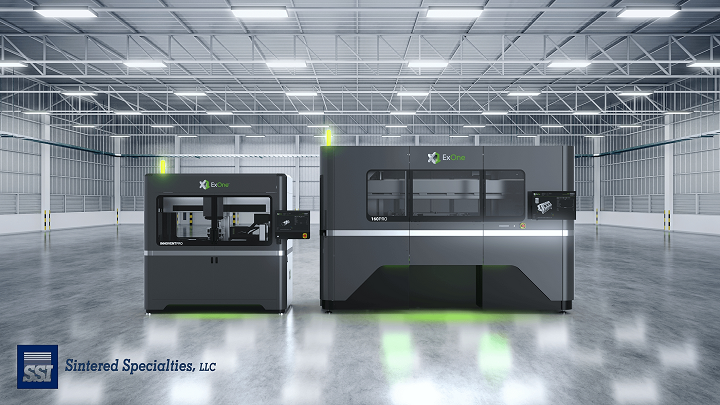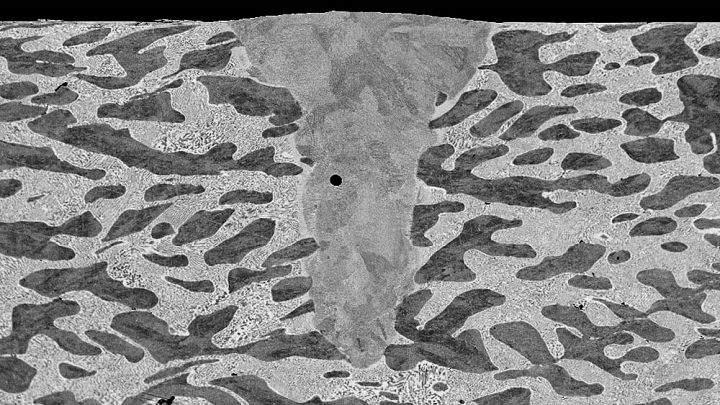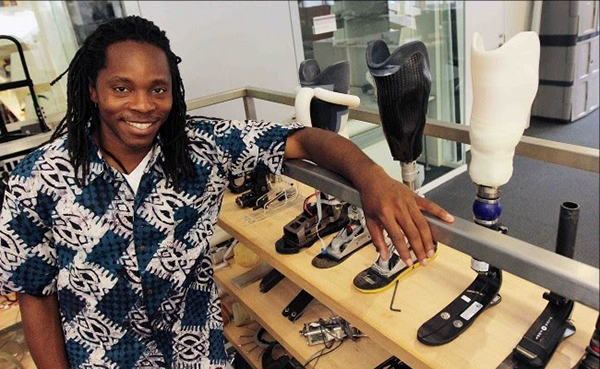In today’s 3D Printing News Briefs, ExOne and SSI are working together to drive volume production with metal binder jet 3D printing, and RadTech has announced a new photopolymer AM alliance. Researchers from Texas A&M published a paper about their method for optimizing alloy properties for flawless metal 3D printing. Finally, MIT researchers will pilot a new mobile imaging and delivery system of 3D printed prosthetic limbs in Sierra Leone.
SSI Purchases ExOne 3D Printers

Wisconsin-based SSI Sintered Specialties, an international supplier of high-performance metal parts, has purchased two metal binder jet 3D printers from The ExOne Company. SSI will use the InnoventPro® 3L for material and application development, with the X1 160Pro™ dedicated to volume production through a fully automated cell with continuous sintering and state-of-the-art furnace equipment.
SSI Sintered Specialties, a metallurgical solutions partner, is helping drive volume production by purchasing an X1 160Pro and an InnoventPro 3L from ExOne. These two metal binder jet printers both use ExOne’s patented Triple Advanced Compaction Technology (ACT), and once delivered in the first half of 2022, will reside in the company’s Wisconsin headquarters, along with post-processing technology and the largest installation of high temperature sintering furnaces in the world. By combining ExOne’s metal binder jet systems with SSI’s furnace and sintering expertise, the two companies will be able to print components with more size and complexity, in a variety of metals, for volume production purposes.
“The addition of metal binder jetting to SSI’s technology portfolio was the natural next step in providing our customers with the most advanced technology on the market to produce complex geometries in volume production. Our expertise and lengthy heritage in high temperature metallurgy processing is a perfect fit for binder jetting technology, and we are thrilled to be working with ExOne to offer our customers the future of metal 3D printing,” said Paul Hauck, the COO of SSI Sintered Specialties.
RadTech & NIST Announce Photopolymer AM Alliance
Together with National Institute of Standards and Technology (NIST), RadTech, the non-profit association for UV+EB photopolymer chemistry has announced a new Photopolymer Additive Manufacturing Alliance, or PAMA, for the purposes of engaging NGOs, academia, industry, and government to help advance materials and systems science for AM. To get things started, PAMA is holding a free, three-part virtual workshop series on November 16, 17, and 18, from 1-3 pm EST each day, to give an overview of the alliance, as well as highlight photopolymer material opportunities within AM. In addition to an open discussion about photopolymer AM, there will be also be interactive networking sessions with focused topics and panels with speakers from Arkema, Georgia Institute of Technology, Azul3D, NIST, and more.
“The Photopolymer Additive Manufacturing Roadmap developed from the workshop guided by NIST, and RadTech highlights key actions that must be taken for Photopolymer Additive Manufacturing to be a substantial contributor to global manufacturing. The Photopolymer Additive Manufacturing Alliance (PAMA) Webinars in November will be a significant step to accelerate photpolymer additive manufacturing collaboration and research,” said Mike Idacavage, Radical Curing LLC.
TAMU Researchers Optimize Metal Alloy Properties

A scanning electron microscope image of a single laser scan cross-section of a nickel and zinc alloy. Here, dark, nickel-rich phases interleave lighter phases with uniform microstructure. A pore can also be observed in the melt pool structure. Image courtesy of Raiyan Seede, Texas A&M University.
In a new study, researchers from Texas A&M University (TAMU) describe how they refined and optimized the process for fabricating high quality metal parts with laser powder bed fusion printing. Alloy metal powders used in AM often contain a mixture of metals at different concentrations, which all have different cooling properties and solidify at different rates; this can create microscopic flaws called microsegregation and compromise a finished part’s integrity. So the researchers looked into the solidification of four alloys containing nickel and one other metal, studying and diagraming their physical states at varying temperatures in order to figure out an alloy’s specific chemical composition that would lead to the least amount of microsegration during printing. Then, they discovered the process parameters that would result in porosity-free parts by melting one track of an alloy metal powder for different laser settings, combining this information with what they’d learned from the first part of the experiment, and finally trained machine learning models to find patterns in the single-track data and diagrams in order to develop an equation for microsegregation that can be applied to other alloys—making it possible to print flawless metal parts with uniform properties at the microscale.
“Our methodology eases the successful use of alloys of different compositions for additive manufacturing without the concern of introducing defects, even at the microscale. This work will be of great benefit to the aerospace, automotive and defense industries that are constantly looking for better ways to build custom metal parts,” concluded Dr. Ibrahim Karaman, Chevron Professor I, Head of the university’s materials science and engineering department, and one of the study’s authors.
MIT: 3D Printing, Delivering Prostheses in Sierra Leone

Sierra Leone’s Chief Innovation Officer and MIT/Harvard inventor, David Moinina Sengeh, working on his protheses research project. Image source: MIT News.
Finally, researchers at the new K. Lisa Yang Center for Bionics at the Massachusetts Institute of Technology (MIT) will be field testing a mobile imaging and delivery system of 3D printed prosthetic limb services for disabled people in rural Sierra Leone, which saw about 27,000 people suffer amputations or become disabled during the West African country’s 11-year civil war. Unfortunately, less than 10% of these amputees benefit from functional prostheses, which is why this project has been listed as one of the main priorities for the research center, which was set up thanks to $24 million in funding from philanthropist Lisa Yang. The new bionics center plans to use interdisciplinary research to develop technologies that help mitigate disability, and its mobile prosthetics service is what Sierra Leone President, Julius Maada Bio, calls “an innovative solution to a global problem.” President Bio is working to turn Sierra Leone into a technology and innovation hub, and set up a Directorate of Science, Technology, and Innovation (DSTI) in 2017, led by the country’s first Chief Innovation Officer, David Moinina Sengeh, an inventor whose research into improving prosthetic limbs will be used by MIT’s new bionics center.
In a statement, MIT said, “Through the mobile delivery system, a key centre objective is to scale up production and access of functional limb prostheses for Sierra Leoneans in dire need.”
Subscribe to Our Email Newsletter
Stay up-to-date on all the latest news from the 3D printing industry and receive information and offers from third party vendors.
You May Also Like
The Third World War & The Disruption of US Military Power
A Reddit user once remarked, “The most terrifying capability of the United States military remains the capacity to deploy a fully operational Burger King to any terrestrial theater of operations...
Australia to Go Orbital: Gilmour Space Gears up for Historic Launch
Australia is on the brink of a historic achievement in space exploration. Gilmour Space Technologies, a pioneering company based on the Gold Coast, has secured the nation’s first-ever orbital launch...
3D Printing Webinar and Event Roundup: November 10, 2024
We’ve got another busy week ahead of webinars and events around the world! There are multiple open houses and conferences, advanced AM training, a 3D printer launch event, our own...
3D Printing News Briefs, November 9, 2024: Concept Car, Afloat 3D Printing, & More
In today’s 3D Printing News Briefs, we’ll start with business, as Anisoprint appointed AM industry veteran Tuan TranPham as President of the Americas and APAC. Then we’ll move onto automotive...





































